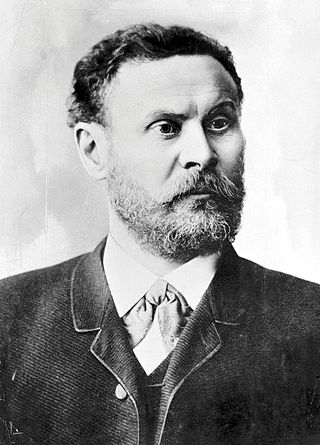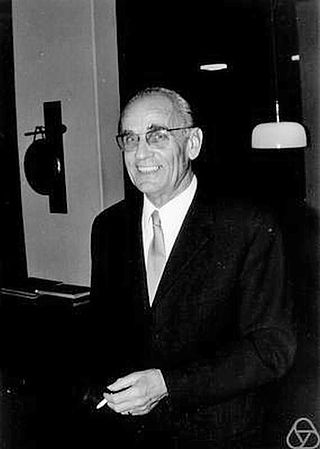
Aeronautics is the science or art involved with the study, design, and manufacturing of air flight–capable machines, and the techniques of operating aircraft and rockets within the atmosphere. The British Royal Aeronautical Society identifies the aspects of "aeronautical Art, Science and Engineering" and "The profession of Aeronautics ."

Aviation includes the activities surrounding mechanical flight and the aircraft industry. Aircraft includes fixed-wing and rotary-wing types, morphable wings, wing-less lifting bodies, as well as lighter-than-air craft such as hot air balloons and airships.

The (International) Radiotelephony Spelling Alphabet, commonly known as the NATO phonetic alphabet, is the most widely used set of clear code words for communicating the letters of the Roman alphabet. Technically a radiotelephonic spelling alphabet, it goes by various names, including NATO spelling alphabet, ICAO phonetic alphabet and ICAO spelling alphabet. The ITU phonetic alphabet and figure code is a rarely used variant that differs in the code words for digits.

Aerospace is a term used to collectively refer to the atmosphere and outer space. Aerospace activity is very diverse, with a multitude of commercial, industrial and military applications. Aerospace engineering consists of aeronautics and astronautics. Aerospace organizations research, design, manufacture, operate, or maintain both aircraft and spacecraft.

The history of aviation extends for more than two thousand years, from the earliest forms of aviation such as kites and attempts at tower jumping to supersonic and hypersonic flight by powered, heavier-than-air jets.

Karl Wilhelm Otto Lilienthal was a German pioneer of aviation who became known as the "flying man". He was the first person to make well-documented, repeated, successful flights with gliders, therefore making the idea of "heavier than air" a reality. Newspapers and magazines published photographs of Lilienthal gliding, favourably influencing public and scientific opinion about the possibility of flying machines becoming practical.

The Wasserkuppe (help·info) is a mountain within the German state of Hesse. It is a large plateau formation at an elevation of 950 metres (3,120 ft) and is the highest peak in the Rhön Mountains. Great advances in sailplane development took place on the mountain during the interwar period, driven by annual contests. Near the summit there is still an airfield used by gliding clubs and pilots of light aircraft.
This is a list of aviation-related events during the 19th century :

An airplane, or aeroplane, informally plane, is a fixed-wing aircraft that is propelled forward by thrust from a jet engine, propeller, or rocket engine. Airplanes come in a variety of sizes, shapes, and wing configurations. The broad spectrum of uses for airplanes includes recreation, transportation of goods and people, military, and research. Worldwide, commercial aviation transports more than four billion passengers annually on airliners and transports more than 200 billion tonne-kilometers of cargo annually, which is less than 1% of the world's cargo movement. Most airplanes are flown by a pilot on board the aircraft, but some are designed to be remotely or computer-controlled such as drones.

The German National Library is the central archival library and national bibliographic centre for the Federal Republic of Germany. It is one of the largest libraries in the world. Its task is to collect, permanently archive, comprehensively document and record bibliographically all German and German-language publications since 1913, foreign publications about Germany, translations of German works, and the works of German-speaking emigrants published abroad between 1933 and 1945, and to make them available to the public. The DNB is also responsible for the Deutsche Nationalbibliografie and several special collections like the Deutsches Exilarchiv 1933–1945, Anne-Frank-Shoah-Bibliothek and the Deutsches Buch- und Schriftmuseum. The German National Library maintains co-operative external relations on a national and international level. For example, it is the leading partner in developing and maintaining bibliographic rules and standards in Germany and plays a significant role in the development of international library standards. The cooperation with publishers has been regulated by law since 1935 for the Deutsche Bücherei Leipzig and since 1969 for the Deutsche Bibliothek Frankfurt am Main.

Nazi memorabilia are items produced during the height of Nazism in Germany, particularly the years between 1933 and 1945. Nazi memorabilia includes a variety of objects from the material culture of Nazi Germany, especially those featuring swastikas and other Nazi symbolism and imagery or connected to Nazi propaganda. Examples are military and paramilitary uniforms, insignia, coins and banknotes, medals, flags, daggers, guns, posters, contemporary photos, books, publications, and ephemera.

Hang gliding is an air sport employing a foot-launchable aircraft known as a hang glider. Typically, a modern hang glider is constructed of an aluminium alloy or composite-framed fabric wing. The pilot is ensconced in a harness suspended from the airframe, and exercises control by shifting body weight in opposition to a control frame.

Akaflieg is an abbreviation for Akademische Fliegergruppe, groups of aeronautical engineering students from individual German Technical Universities, pre and postwar, who design aircraft, often gliders.

The Ministry of Aviation was a government department during the period of Nazi Germany (1933–45). It is also the original name of the Detlev-Rohwedder-Haus building on the Wilhelmstrasse in central Berlin, Germany, which today houses the German Finance Ministry.

Wolfgang Siegfried Haack was a German mathematician and aerodynamicist. He in 1941 and William Sears in 1947 independently discovered the Sears–Haack body.
Founded on August 31, 1881, the Deutsche Verein zur Förderung der Luftschifffahrt,, was the first German aviation association.
Georg Hans Madelung was a German academic and aeronautical engineer. Madelung studied at several German Technical Universities before his service as a pilot in the First World War. After the war he lectured and worked in Germany and the United States, working on a number of significant aeronautical achievements. Madelung joined the Nazi Party in 1937, and during the Second World War was involved with aeronautical warfare research, including work with Wernher von Braun's rocket program. After the cessation of hostilities, Madelung resumed academic work in both Germany and the USA. Madelung's research at the Naval Medical Research Institute, Bethesda, Maryland included the effects of high acceleration on the human body. He permanently returned to live in Germany from 1954 until his death in 1972. The second son of his marriage to Elisabeth Emma née Messerschmidt was Wilferd Madelung, a noted scholar in Islamic studies.
Walter Kreiser was a German aircraft designer and journalist best known for publishing an article in the magazine Die Weltbühne in 1929 which exposed the secret creation of a German Air Force in violation of the Treaty of Versailles. Its publication resulted in him being convicted in 1931 of espionage in the Weltbühne Trial. He and future (1935) Nobel Peace Prize winner Carl von Ossietzky received 18 months in prison.
Rivalen der Luft – ein Segelfliegerfilm is a German film released in January 1934, which was banned in 1945 by the Allied Control Council as a Nazi Propaganda film, although it was later removed from the list of so-called Conditional Films.

Adolf Georg Heinrich Klemens Vinzenz Baeumker was a German officer. From the 1920s to the 1950s, he was an official of various military and civil aviation research institutions.















